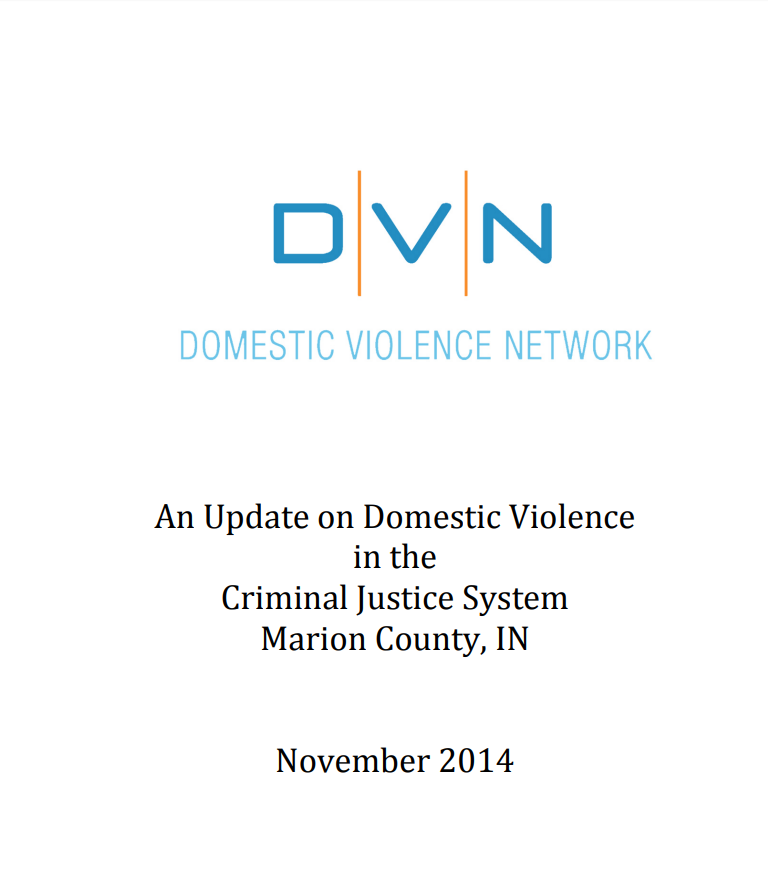Read the Report
Report published in November 2014
Overview
Up until the April 2014 report on Domestic Violence in the Criminal Justice System, it had been very difficult to generate statistics describing the state of domestic violence in Marion County. The Polis Center at IUPUI conducted a feasibility study for the Domestic Violence Network to link data from four sources that collect information on victims and perpetrators of domestic violence in the legal system, including The Julian Center, Indianapolis Metropolitan Police Department (IMPD), Marion County Prosecutor’s Office, Indiana Supreme Court. The purpose of the project was to demonstrate the feasibility of integrating the domestic violence data, given the quality and incompleteness of some of the required data sets, and to determine what analysis and reporting are possible given these limitations. Data had to be cleaned and standardized to ensure comparability across the data sets, and an algorithm was developed to identify unique individuals across all four data sets.
The result was a report of statistics representing the picture of domestic violence for incidents where the legal system is involved. It does not count all of the incidents that go unreported.
This November 2014 report provides an update on the statistics presented in the first report. In addition, it looks at other factors such as the season and month of domestic violence activity and geographic patterns. It also explores the effectiveness of the Baker One Initiative, which targets high- risk perpetrators and collects special data for cases where domestic violence is suspected.
Domestic Violence Victims and Perpetrators
- In 2013, there were an estimated 11,559 victims of domestic violence (1.3% of the population) and 9,945 perpetrators reported in the legal system.
- 14% percent of victims experienced more than one incident of domestic violence during the 2013 year.
- 16% of perpetrators are implicated in more than one domestic violence incident.
- 9% of perpetrator-victim pairs were involved in a domestic violence incident with each other more than one time.
Demographics/Socio-economics of Victims and Perpetrators
- Victims are predominantly females (80%)1, with the largest group aged 20 to 24.
- Perpetrators are predominantly males (80%)2, with the largest group aged 25 to 29.
- 51% of victims are Caucasian, however, African Americans are disproportionately represented among domestic violence victims.
- 87% of the perpetrator-victim pairs in the Marion County Protective Orders records have the same race, with 50% of the pairs both Caucasian.
- 77% of perpetrator-victim pairs (in the protective orders) involve a male perpetrator and female victim.
- African Americans are disproportionately represented among perpetrators in crime incidents involving domestic violence as compared with Caucasians.
- Caucasian victims appear to be more likely to obtain a protective order than African American victims
Where Does Domestic Violence Occur?
- In 2012, 77% of reported domestic violence incidents occurred at home.
- The domestic violence rate is highest in Center Township, which is double the rate in the IMPD jurisdiction.4
- Low-income neighborhoods have a higher reported incidence of domestic violence than middle- and upper-income areas.

